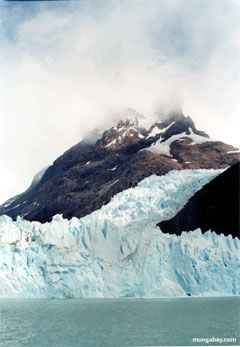Antarctic glaciers show Earth’s climate system capable of rapid shifts
mongabay.com
May 8, 2006
Researchers at Syracuse University have determined that glaciers once covered a much larger area of Antarctica than originally thought, suggesting that Earth’s climate system is capable of rapid shifts.
Looking at sediments from marine deposits and rock sources on Seymour Island, Syracuse University Professors Linda C. Ivany and Scott D. Samson along with colleagues at the University of Leuven in Belgium and Hamilton College found evidence that glaciers once covered extensive parts of the West Antarctica ice sheet. Previously, scientists had assumed that glaciers were confined to the eastern part of Antarctica, where the biggest ice sheet is today. The findings are significant because they suggest that the climatic response to the drop in greenhouse gas concentrations in the atmosphere 34 million years ago was greater than initially believed.
“One of the most fundamental climate shifts that this planet has undergone since the events that precipitated the extinction of the dinosaurs is the so-called
greenhouse to icehouse transition’—the time when Earth went from having virtually no ice on it at all to one with a more or less permanent ice sheet covering Antarctica,” said Ivany, a professor of earth science at Syracuse and lead investigator of the study. “This happened about 34 million years ago, and is marked by dramatic changes in the chemistry of the oceans and the appearance of ice rafted debris’ in ocean sediments around Antarctica, carried there by icebergs from land that floated out and melted far from the continent, releasing the sand and rock that had been frozen into them.”

|
|
According to a release from the research team, scientists believe the “growth of the Antarctic ice sheet was initiated by a drop in greenhouse gas concentrations in the atmosphere in combination with a change in ocean circulation caused by South America pulling away from Antarctica” during the Eocene-Oligocene transition. The researchers say that at this time, Earth cooled rapidly enough to allow the growth of ice on the entire Antarctic continent all at once.
The researchers conclude that “because Earth’s climate system is capable of shifting this rapidly and dramatically to such a new and different state, their discovery may provide an insight into how things could change in the future if we continue to alter our environment.”
The research is published in the article “Evidence for an Earliest Oligocene Ice Sheet on the Antarctic Peninsula,” in the May 2006 issue of the journal, Geology and was supported by funding from the National Science Foundation’s Office of Polar Programs.
This article is based on a news release from Syracuse University.